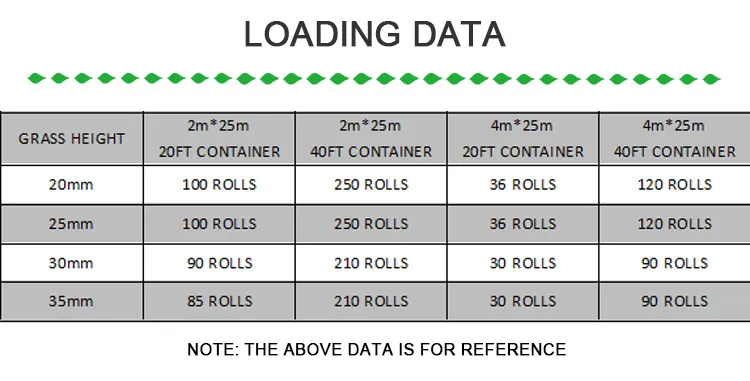
- Afrikaans
- Arabic
- Belarusian
- Bengali
- Czech
- Danish
- Dutch
- English
- Esperanto
- Estonian
- Finnish
- French
- German
- Greek
- Hindi
- Hungarian
- Icelandic
- Indonesian
- irish
- Italian
- Japanese
- kazakh
- Rwandese
- Korean
- Kyrgyz
- Lao
- Latin
- Latvian
- Malay
- Mongolian
- Myanmar
- Norwegian
- Persian
- Polish
- Portuguese
- Romanian
- Russian
- Serbian
- Spanish
- Swedish
- Tagalog
- Tajik
- Thai
- Turkish
- Turkmen
- Ukrainian
- Urdu
- Uighur
- Uzbek
- Vietnamese
Exploring the Benefits of Artificial Turf for Football Fields and Player Performance
Oct . 21, 2024 01:43 Back to list
The Rise of Fake Football Grass A Game Changer for the Sport
In recent years, the world of sports has witnessed a significant transformation in the materials used for playing surfaces. One of the most notable innovations is the widespread adoption of fake football grass, also known as artificial turf. This synthetic alternative to natural grass has become increasingly popular in both professional and amateur football, offering numerous benefits that have fundamentally changed the way the game is played and experienced.
The Evolution of Artificial Turf
The journey of artificial turf began in the 1960s with the development of the first generation of synthetic grass. Initially introduced to address the challenges posed by natural grass—such as uneven playing surfaces and susceptibility to weather conditions—early products lacked the realism and performance characteristics players desired. However, technological advancements have led to the creation of more sophisticated and durable materials that closely resemble real grass in both appearance and feel.
Today’s artificial turf is often made from polyethylene or polypropylene fibers that mimic the look and texture of natural grass, providing players with a safe and comfortable playing surface. Innovations like infill systems, which typically include rubber and sand, enhance shock absorption and stability, making the playing experience more enjoyable while minimizing the risk of injury.
Advantages of Fake Grass
1. Durability and Maintenance One of the most compelling reasons for the shift to fake football grass is its durability. Unlike natural grass, which requires regular mowing, watering, and fertilizing, synthetic turf is designed to withstand heavy foot traffic and adverse weather conditions. It remains resilient throughout the season and requires significantly less maintenance. Sports facilities can save both time and money on upkeep, allowing funds to be allocated to other essential areas.
2. Playing Conditions Artificial turf offers a consistent playing surface regardless of the weather. Rain or shine, games can be played without concern for muddy fields or uneven patches of grass. This reliability is particularly important for professional leagues where the integrity of the playing field can directly impact the outcome of games. Moreover, fake grass maintains its playing characteristics throughout the seasons, ensuring an optimal experience for players.
fake football grass

3. Sustainability With growing awareness about environmental sustainability, fake football grass offers a promising solution. Natural grass requires significant water usage, pesticides, and fertilizers, all of which can adversely impact the environment. In contrast, synthetic turf reduces the need for these resources. Moreover, some manufacturers create eco-friendly products using recycled materials, contributing to a more sustainable sports culture.
4. Game Accessibility The uniformity and durability of artificial turf enable a wider variety of sports and recreational activities to be played in different settings, including schools and community parks. This versatility promotes inclusive participation in sports, allowing more individuals to engage in football without the barriers posed by maintaining natural grass fields.
Criticisms and Considerations
Despite its many benefits, fake football grass is not without its challenges. Some players express concerns about the potential for increased injuries, such as turf toe or abrasions, which could result from the harder surfaces of synthetic pitches. Additionally, there are debates regarding the heat retention of artificial turf, with surface temperatures potentially being significantly higher than natural grass, especially under direct sunlight.
Furthermore, the environmental impact of producing and disposing of synthetic materials remains a point of contention. While some products are recyclable, the longevity of artificial turf raises questions about the long-term sustainability of its production cycle.
The Future of Fake Football Grass
As technology continues to advance, the future of fake football grass looks promising. Ongoing research is aimed at developing materials that are not only more comfortable and safer for athletes but also more environmentally friendly. Innovations in infill materials, for instance, seek to enhance player safety and reduce overheating on surfaces.
In conclusion, the rise of fake football grass has revolutionized the sport by providing a durable, reliable, and versatile playing surface. While it is essential to address the criticisms and concerns surrounding its use, the benefits it offers are undeniable. As we move forward, the evolution of artificial turf holds the potential to further enhance the game of football, making it more accessible and enjoyable for athletes and fans alike. The transition from traditional grassy fields to synthetic pitches represents not just a change in materials, but a fundamental shift in how we approach and experience the beautiful game.
-
The Benefits of Artificial Turf for Indoors
NewsJul.15,2025
-
How Artificial Grass Suppliers Ensure Quality Products
NewsJul.15,2025
-
Artificial Grass and Pets: A Space for Relaxation
NewsJul.08,2025
-
Balcony & Outdoor Decoration with Artificial Grass
NewsJul.08,2025
-
Best Indoor Artificial Grass for Home
NewsJul.07,2025
-
Best Pet Turf for Dogs: Safe & Durable Artificial Grass Options
NewsJul.07,2025
Products categories









